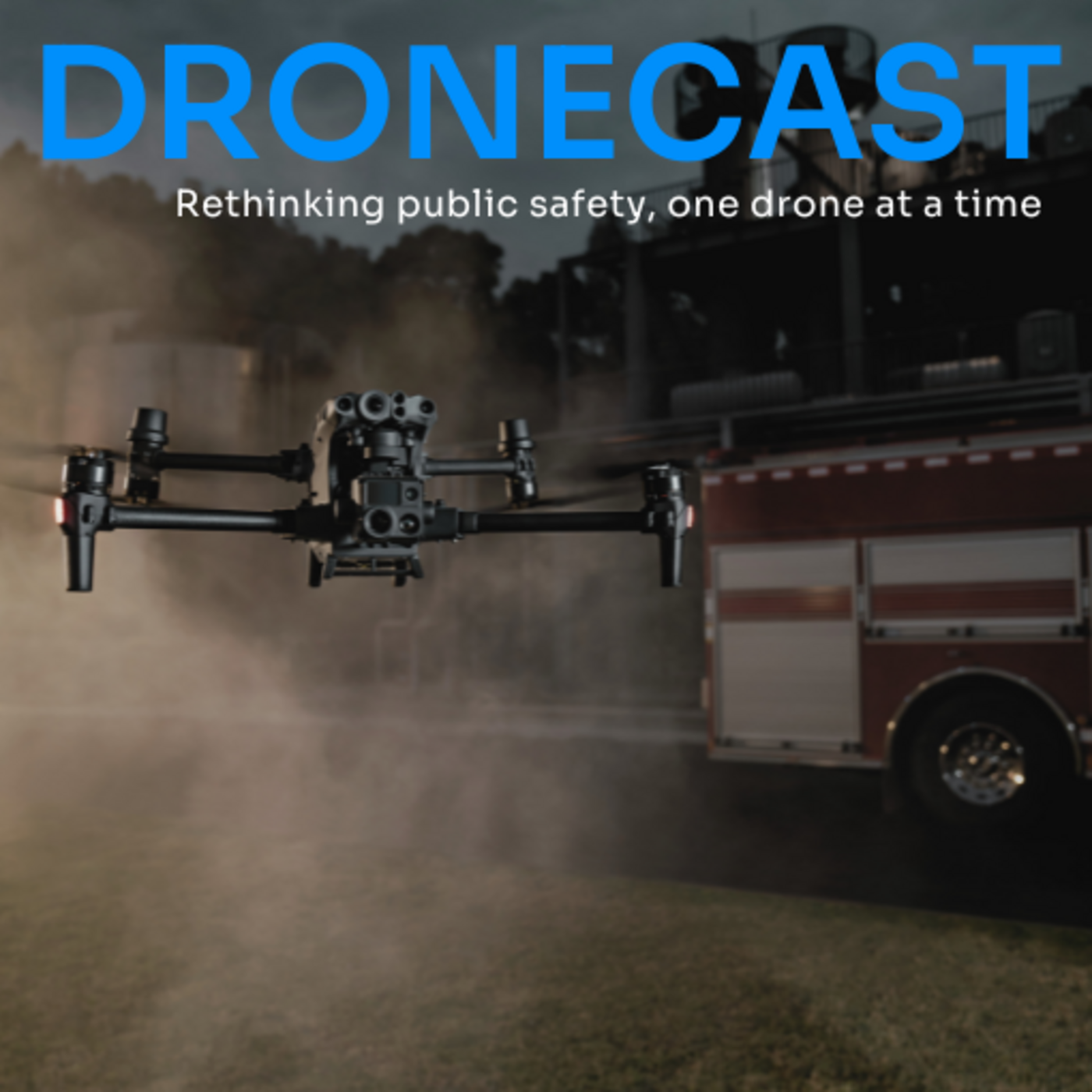DFR at Scale: Implementation, Challenges, and the Path Forward
October 28, 2025

In Part 2 of this DroneCast conversation, host Joe Kearns continues his discussion with Matt Sloane, Co-founder and Chief Strategy Officer at Skyfire AI, to explore what Drone as First Responder (DFR) at scale truly means in the wake of the FAA’s proposed Part 108 rule. They examine how multi-agency collaboration, smarter cost-sharing, and advanced training infrastructures, such as Skyfire’s new 2,200-acre facility in Huntsville, Alabama, will accelerate adoption. Matt and Joe also address the cultural and technical challenges that prevent DFR programs from getting off the ground, emphasizing practical steps for mid-sized agencies to start small, stay compliant, and scale intelligently.
In “Scaling DFR: Regional Collaboration, Real-World Training, and the Road Beyond Part 108,” DroneCast host Joe Kearns and guest Matt Sloane from Skyfire AI unpack what DFR “at scale” really looks like and how public safety organizations can prepare for it. Building on Part 1’s breakdown of the FAA’s proposed Part 108 rule, this episode dives into the operational realities of bringing DFR programs beyond pilot projects. Matt and Joe highlight the importance of regional and state-level cooperation, where agencies share radar, infrastructure, and data to reduce costs and improve interoperability.
They discuss why interoperability and cost-sharing models are essential to success and how the lack of them currently slows the industry’s growth. As Matt notes, the key is collaboration, not competition, between police, fire, EMS, and city departments that often operate in silos.
The conversation then turns to Skyfire AI’s new training and testing facility in Huntsville, Alabama, a 2,200-acre “DFR Village” designed for hands-on testing of hardware, software, and real-world scenarios. This environment allows agencies to compare platforms, simulate incidents, and develop scalable, compliant programs ahead of Part 108’s adoption.
Finally, Matt and Joe address why some DFR programs fail, citing unrealistic expectations, overreliance on vendor promises, and lack of ongoing operational support. They advocate for starting small, focusing on mission relevance, and developing partnerships that extend beyond sales. The episode concludes with a look ahead at cybersecurity, autonomy, and data-sharing mandates that Part 108 will usher in, urging leaders to take their programs, policies, and training more seriously than ever.
What You’ll Learn:
- What “DFR at scale” looks like beyond individual agency deployments
- How cost-sharing radar and infrastructure enable regional operations
- Why interoperability between hardware and software vendors remains a major challenge
- The role of AI and autonomy in managing multi-ship or swarm operations
- The purpose of Skyfire AI’s new 2,200-acre training facility and how it supports DFR adoption
- Why most DFR programs fail—and how to avoid the pitfalls of hype-driven spending
- The growing importance of cybersecurity and physical site security under Part 108
- Practical steps for midsize agencies to build sustainable, compliant DFR programs
- How collaboration through organizations like Drone Responders fosters best practices
- Why public safety leaders must take program governance, data, and training seriously
Helpful Links:
- Fill out the Audience Form here.
- Explore more episodes and insights on the official DroneCast website: https://www.dronesense.com/dronecast
- Ready to launch or enhance your drone program? Get Started with DroneSense today!
- Parrot, ANAFI UKR Tech Sheet: https://5n8jp.share.hsforms.com/2oWfNvmGLRCeKUWcJGtFbBg
Episode Highlights:
- [00:15] The Future is Regional
Joe Kearns explains why local, regional, and even statewide DFR programs are inevitable—and how shared radar and cost-sharing can make it possible. - [08:56] The DFR Village: Training Without the Guesswork
Matt describes Skyfire’s new training facility, where agencies can test drones, sensors, and software in real-world conditions before purchasing—saving time and avoiding mismatched investments. - [11:36] Why DFR Programs Fail
Unrealistic expectations and one-size-fits-all thinking cause most programs to stall. Matt emphasizes the importance of pilot projects, iterative learning, and program alignment with actual mission needs. - [16:00] Start Small, Scale Smart
Matt shares how agencies can begin DFR operations today with minimal cost—by simply deploying from rooftops within line of sight—and grow strategically from there. - [21:54] Cybersecurity and Physical Site Access
Under Part 108, operators must adopt strict access controls, reporting, and data safeguards, with TSA now involved in the regulatory conversation. - [23:40] Detect and Avoid Dilemmas
Matt warns that the FAA’s radar and detect-and-avoid requirements could pose cost barriers for small operators—and calls for a more flexible, scalable approach. - [27:33] The Future of Skyfire AI
Matt outlines Skyfire’s focus on autonomy, multi-ship formations, and AI-driven mission planning to expand DFR capabilities safely and efficiently.
Episode Resources:
- Matt Sloane on LinkedIn
- Joe Kearns on LinkedIn
- Get started with DroneSense
- Parrot, ANAFI UKR Tech Sheet: https://5n8jp.share.hsforms.com/2oWfNvmGLRCeKUWcJGtFbBg
Dronecast: Rethinking Public Safety, One Drone at a Time Podcast is handcrafted by our friends over at: fame.so
Previous Guests include: Matt Rowland, Jason Burnside
Check out our 3 most downloaded episodes:
Previous Guests include: Matt Rowland, Jason Burnside
Check out our 3 most downloaded episodes: